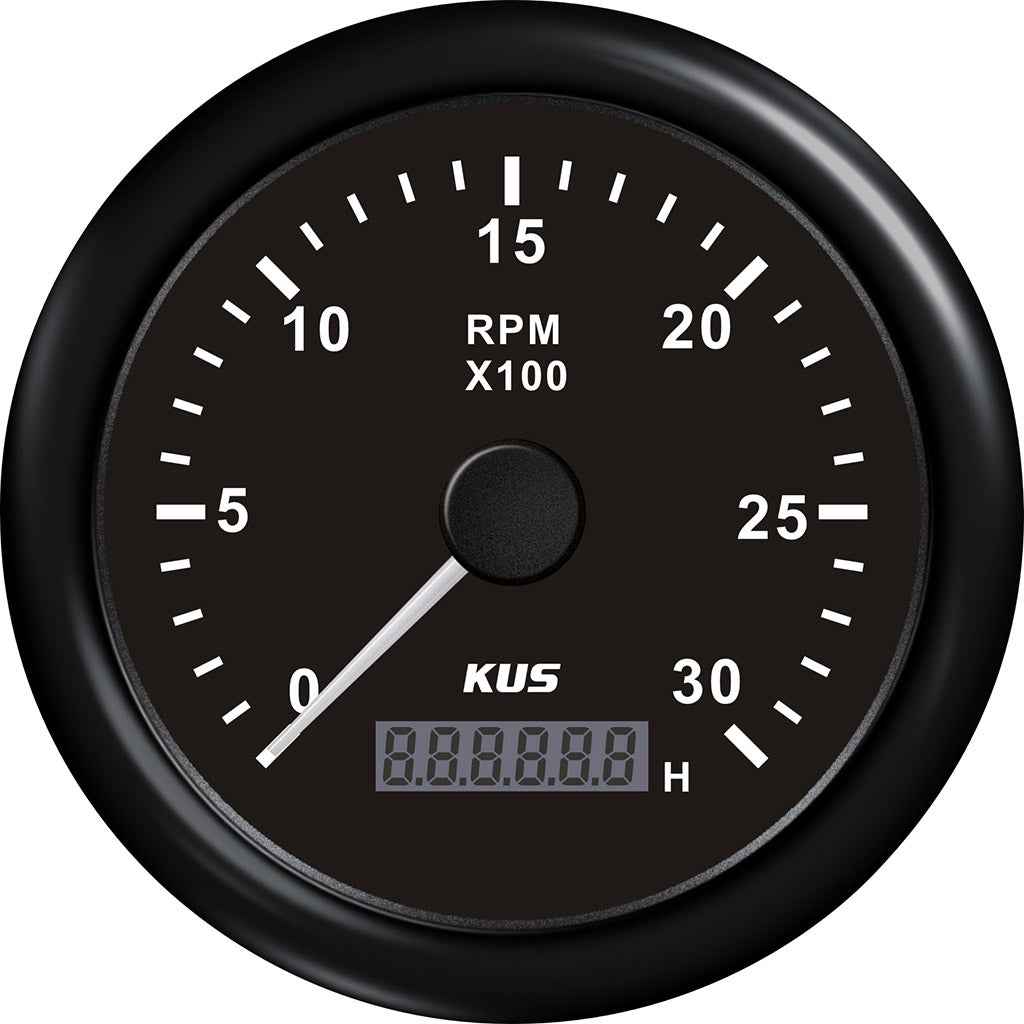Discover How a Tachometer Can Boost Your Lorry's Efficiency
Discover How a Tachometer Can Boost Your Lorry's Efficiency
Blog Article
The Value of a Tachometer in Checking Engine Speed and Efficiency in Automotive Applications
In the realm of auto engineering, the tachometer stands as an essential tool in the motorist's toolbox, giving a direct home window right into the inner functions of a vehicle's engine. Past its function as a plain scale of transformations per minute (RPM), the tachometer acts as a crucial device for lovers and specialists alike, providing real-time understandings right into engine efficiency and health. Comprehending the significance of this device exceeds surface-level observations, diving right into the intricate partnership between engine speed, power output, and general driving experience. As we explore the complex role of the tachometer in automobile applications, a deeper recognition for its effect on lorry characteristics and effectiveness starts to arise.
Significance of Keeping Track Of Engine RPM
Checking engine RPM, or revolutions per min, is a vital aspect of automobile upkeep and performance analysis. Engine RPM straight correlates with the speed at which the engine's crankshaft turns, indicating just how quickly the engine is running - tachometer. By keeping track of RPM, auto mechanics can assess the health of the engine, discover prospective problems, and fine-tune performance. An unusual RPM analysis might signal troubles such as engine misfires, defective ignition system, or issues with the gas delivery system. Continually high RPM analyses might show aggressive driving habits or the demand for a higher gear change to boost fuel effectiveness.
Furthermore, monitoring engine RPM is vital for efficiency examination in racing and high-performance vehicles. Preserving ideal RPM levels is vital for accomplishing peak power outcome and acceleration. Racers frequently use tachometers to guarantee they are operating within the excellent RPM range for optimum efficiency. In recap, monitoring engine RPM is not only important for discovering problems yet also for enhancing engine efficiency in numerous vehicle applications.

Benefits of Real-Time Data
In automobile applications, real-time information plays an essential role in providing instant insights right into the performance and condition of the vehicle. By continually keeping an eye on different parameters such as engine rate, temperature, gas usage, and much more, real-time information uses countless benefits that add to improved performance and security on the roadway.
One substantial advantage of real-time information is its ability to alert vehicle drivers and professionals to any anomalies or issues quickly. This positive approach enables fast recognition of potential troubles, enabling prompt interventions to avoid further damages or failures. Furthermore, real-time information facilitates performance optimization by giving immediate responses on driving routines and engine performance. Chauffeurs can readjust their behavior in real-time based on this information to achieve better gas economic situation click here for info and prolong the life-span of their vehicle.

In addition, real-time information plays a crucial function in contemporary automobile diagnostics, enabling specialists to promptly identify and deal with malfunctions. This causes reduced downtime, reduced upkeep costs, and ultimately, enhanced overall automobile integrity and long life (tachometer). By harnessing the power of real-time information, automotive stakeholders can make enlightened decisions that favorably impact both the performance and long life of the vehicle
Influence On Gear Shifts
The tachometer plays an important function in optimizing equipment changes by offering real-time engine speed data to the driver. When coming close to the redline on the tachometer, it signifies the motorist to upshift to avoid over-revving the engine and triggering prospective damages.
Moreover, the tachometer help in attaining smoother gear changes, specifically in hands-on transmissions. By keeping track of engine speed, drivers can execute gear shifts at the ideal RPM variety, minimizing jerking motions and reducing endure the transmission components. This precision on duty changes not just enhances driving convenience however likewise adds to fuel efficiency.
Enhancing Gas Efficiency
Provided the essential role the tachometer plays in maximizing equipment shifts for efficiency and engine health, it straight adds to making best use of fuel effectiveness in automotive applications. By supplying real-time comments on engine speed, the go to website tachometer helps drivers in maintaining one of the most effective RPM array for fuel economy. When chauffeurs continually keep an eye on the tachometer and adjust their motoring routines as necessary, they can stay clear of unnecessary fuel usage triggered by over-revving or hauling the engine.
Additionally, the tachometer assists motorists identify one of the most fuel-efficient gear to be in at any kind of given minute, stopping the engine from functioning tougher than required. This is especially critical throughout acceleration and cruising, where remaining in the best equipment can substantially influence gas performance. Additionally, the tachometer can notify vehicle drivers to possible mechanical issues that might be adversely affecting gas economic climate, such as a sliding clutch or a clogged air link filter. In final thought, the tachometer works as a beneficial device in boosting fuel performance by promoting optimal driving routines and identifying areas for renovation in the automobile's efficiency.

Maximizing Engine Longevity
The tachometer's role in monitoring engine speed and efficiency is crucial in making sure the long life of vehicle engines. Monitoring the tachometer permits drivers to remain within the recommended RPM array for their lorry, protecting against unneeded strain on the engine and prolonging its life expectancy.

Conclusion
To conclude, the tachometer plays an important role in checking engine speed and performance in automotive applications. By supplying real-time information on RPM, it enables effective equipment changes, enhanced gas efficiency, and maximized engine durability. This device is important for preserving ideal engine efficiency and ensuring the overall functionality of a lorry.
Report this page